Many companies exhibited their offshore inventory at the AWEA conference in Atlantic City earlier in October. Here’s a look at a few and what they have to offer.
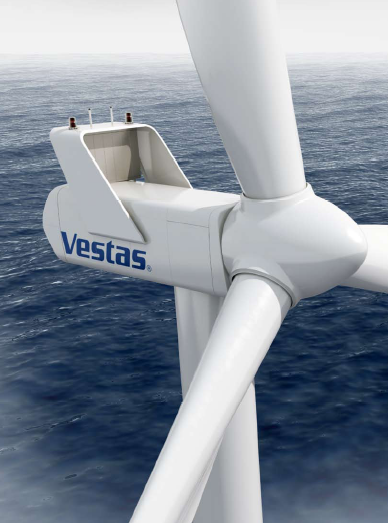 Vestas V112 3.0-MW offshore turbine
Vestas V112 3.0-MW offshore turbine
The V112-3.0MW Offshore is designed to take full advantage of wind conditions at sea. It’s well suited for high offshore wind speeds and low turbulence and has the IEC IB offshore wind classification. It features what the company calls the GridStreamer, which has a permanent magnet generator to ensure wider opertaion range of the turbine and reduced loss of power, along with a full-scale converter that offers excellent grid support, reduced drive-train loads, and high energy productions over a greater range of wind speeds. Other features include:
-large rotor diam. (112 m), 54.65-m blades for high yield even at low (below 12 m/s) and medium wind speeds
-nacelle cover has the ability to close the integrated air intake holes and service hatches, and is 6.8 m installed (3.4 m for transport)
-The GridStreamer has the ability to continue to operate even during a severe grid voltage drop, converting excess power to heat and being able to quickly down-rate to 20%
-voltage range is 0.9-1.1 pu, frequency is 47-53 Hz, max short-circuit level 25kA, power factor range: 0.9 capacitive/0.83 inductive (HV transformer)
REpower 6M offshore turbine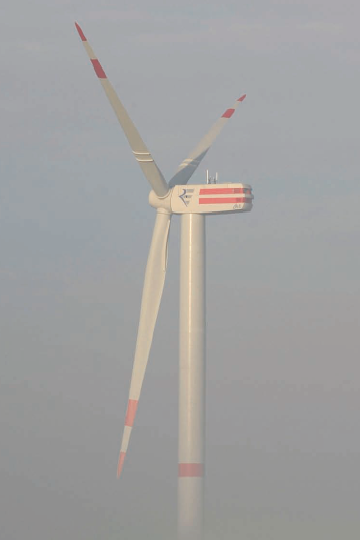
REpower’s 6M offshore wind turbine stems from its 5M predecessor. The IEC IB class design is based on the company’s philosophies including conservative component design, ease of transportation, and grid compatibility. The turbine has a safety system including individually adjustable blades (electrically controlled), redundant temperature and speed sensing system, lightning protection, rotor holding brake with soft-brake function, and automatic fire protection system. Other features include:
-a power rating of 6,150 kW
-offshore cut-in wind speed of 14 m/s and cut-out at 30 m/s
-rotor diam. is 126 m, with fiberglass-reinforced plastic rotor blades 61.5 m
-hub height is 85-95 m (site specific)
-frequency is 50 Hz
Siemens SWT-2.3 and 3.6 offshore turbine
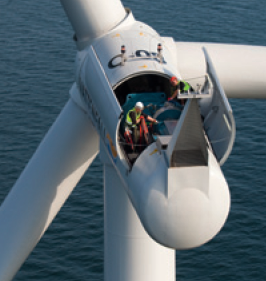 Rotor blades are made of fiberglass-reinforced epoxy and manufactured through what the company calls its Integralblade process. This means the blades are cast in one piece in a closed process, leaving no weak points at glue joints. An automatic lubrication system for major components of the nacelle (main shaft, gear box, and yaw system) enables continued operation even if maintenance is severely delayed by weather. The offshore turbines are normally mounted on tubular steel towers fitted with internal hoists and comply with all relevant grid codes due to a NetConverter system that uses full conversion of the generated power. Other features of the 3.6 include:
Rotor blades are made of fiberglass-reinforced epoxy and manufactured through what the company calls its Integralblade process. This means the blades are cast in one piece in a closed process, leaving no weak points at glue joints. An automatic lubrication system for major components of the nacelle (main shaft, gear box, and yaw system) enables continued operation even if maintenance is severely delayed by weather. The offshore turbines are normally mounted on tubular steel towers fitted with internal hoists and comply with all relevant grid codes due to a NetConverter system that uses full conversion of the generated power. Other features of the 3.6 include:
-107-m diameter, blade length 52 m, and hub height 80 m or site specific
-3,600-kW generator with 690 V
-cut-in wind speed of 3-5 m/s and cut-out of 25 m/s
-NetConverter system is a modular arrangement for easy maintenance. Power is transferred by DC from rectifier installed in nacelle to inverter in tower bottom, minimizing cabling losses and avoided complications from nacelle-mounted transformer
GE 4.0-110 offshore turbine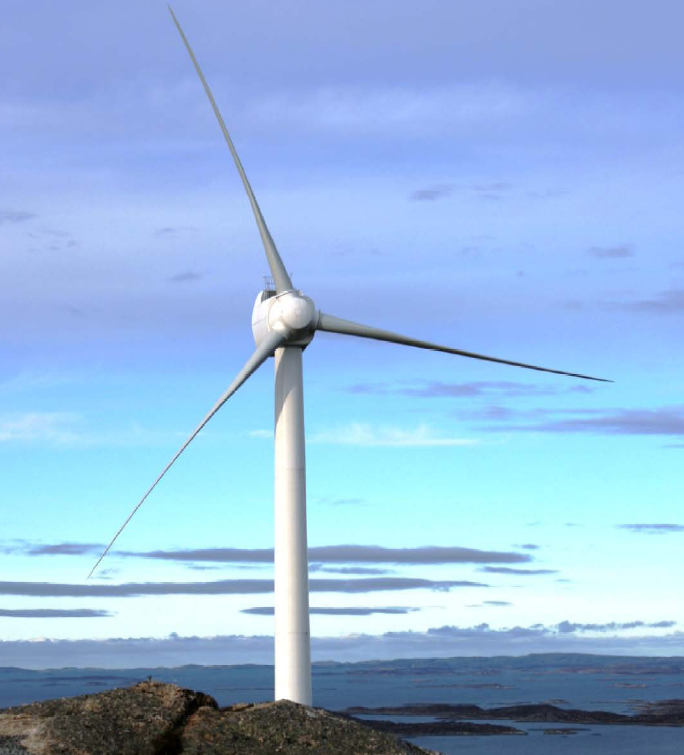
Growing from a 3-MW turbine in 2005, to a 3.5-MW model in 2007, GEdevelops its 4.0-MW offshore turbine in 2010. The turbine is built around a permanent magnet generator, delivering high efficiency at low wind speed. With direct-drive technology, the turbine removes the single most costly failure in offshore, gearboxes, and replaces it with reliable, slow-speed components designed for the offshore environment. With a spacious nacelle and internal hub access, the IEC class turbine offers maintenance and safety advantages. Other features include:
-rotor diameter of 110 m
-cut-in wind speed of 3 m/s and cut out of 25 m/s
-At just 10 rpm, magnets at the rotor tip move at about 188 m/min. The generator’s 20 sections or modules allow replacing a portion of it without a complete removal of the 90-ton unit.
-Two main bearings transfer axial and bending loads from rotor to bedplate for higher reliability. The unit also sports continuous close-wind tracking to capture more energy.
-No yaw brakes or hydraulics.
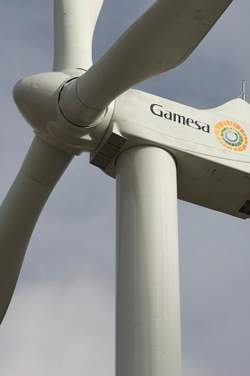 Gamesa G11X 5.0-MW offshore turbine
Gamesa G11X 5.0-MW offshore turbine
A progression from the G10X 4.5-MW turbine, Gamesa is developing the G11X designed for variable and often extreme marine conditions, inclement weather, and challenging accessibility. A multi-variable control system minimizes blade vibration and reduces blade loads up to 30%. A permanent magnet generator and full converter comply with demanding grid code and connection requirements. Because of it’s modular design, the system keeps running even if any of the individual modules fail. A two-stage planetary integrated gear box with dual bearing design improves reliability by using fewer parts and avoiding the use of high speed bearings. The blades feature an airfoil design and the nacelle is designed to be spacious for technicians and tools, helping to reduce overall maintenance times and ensure safety. Gamesa has partnered with American shipbuilder Northrop Grumman to launch a prototype in the U.S. The two companies plan to install two of the turbines by 2012. Other features include:
-rotor diameter of 115 m
-3 upwind blades
-hub height adapted to site requirement (75-100 m)
Filed Under: Offshore wind, Turbines



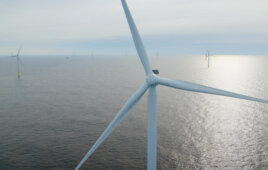
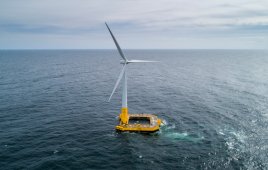
‘At just 10 rpm, magnets at the rotor tip move at about 188 m/min’ GE 4.0-110 offshore turbine.
Don’t you mean 188m/sec? What is the purpose of magnets at the rotor tip?
Chris:
188 m/min is correct. The generator diameter, if I remember correctly is about 6 m. That could give a circumference of:
C = pi d
= 3.14 x 6m
=18.6 m
Speed or v = d/t (on the circumference)
v = 18.6 m x 10 rev/min
= 186 m/min
Magnets on the circumference of the direct-drive generator reach a sufficient speed to induce a current as they pass each coil, sort of. An electrical engineer can give a better explanation.